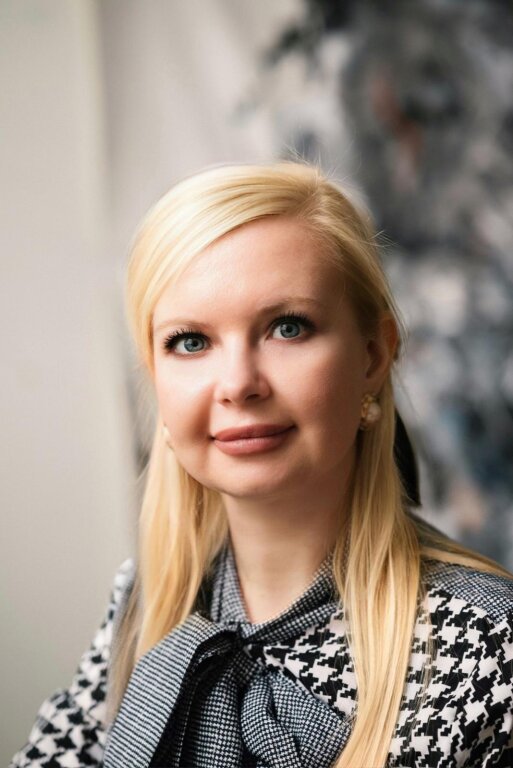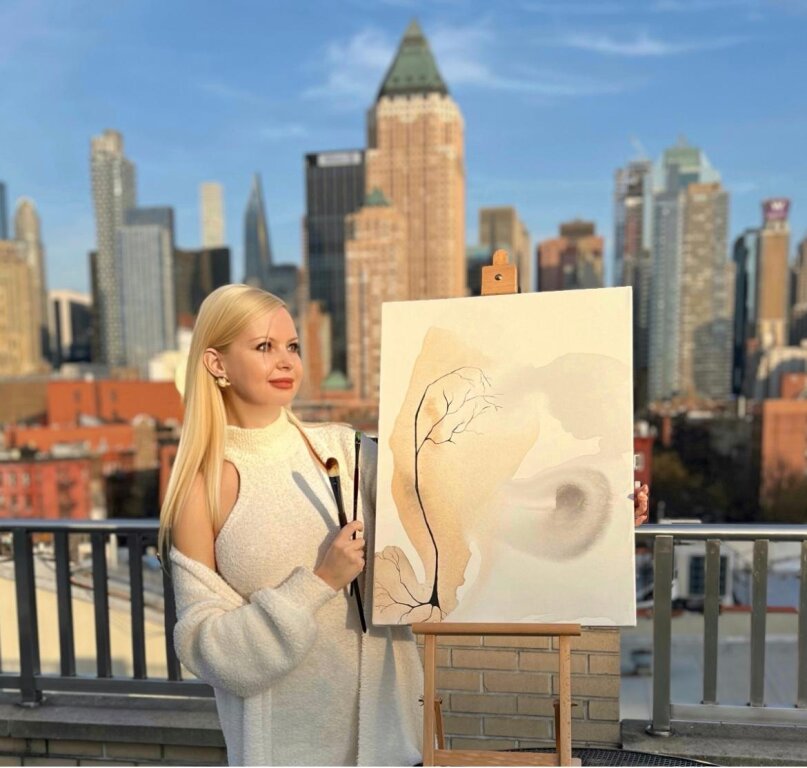An artist’s journey in search of inspiration:
Ekaterina Stolyarova  Automatic translate
Automatic translate
The art of painting remains one of the most mystical and amazing forms of human self-expression. From ancient cave paintings to modern digital works, every painting begins with an idea. But where do they come from? How does a moment of inspiration turn into a canvas full of color and life? To find out the answers to these questions, we talked with Ekaterina Stolyarova.

Catherine always found solace and inspiration in nature. Therefore, in her works she tries to reflect its beauty. In her works she uses only natural colors. The artist notes that recently she has been very concerned about environmental issues now, so she abandoned traditional acrylic paints, as they have a negative impact on the environment.
Ekaterina, tell us when you became interested in painting?
— My passion for painting began in early childhood. Then the first strokes on paper in kindergarten brought untold joy and motivated me to develop my artistic skills. Subsequently, this hobby became the passion of my life, inspiring creativity and self-expression through my works. Each painting is a reflection of my mood, thoughts and feelings. Through the paintings, the viewer has the opportunity to see the world through the eyes of the artist, to feel his inner world and emotions. It is not enough for an artist to create only for himself, because creating is half of happiness. Every creative person needs the respect of the crowd, the viewer, and this is the other half of happiness - sharing yourself with others, giving your eyes and feelings, as in love.
My childhood hobby grew into something more. Now I can’t imagine my life without it. Often in my thoughts I found myself in the forest. Surprisingly, it has always been different for me: white, blue, pink, lilac, mother-of-pearl. In these moments, you mentally take brushes, paints, canvas and begin to paint. These states encouraged me to be creative and motivated me to develop.
Do you have a favorite artist?
— For the first time I saw Claude Monet’s paintings at the Pushkin Museum, since then he has become my favorite artist. His works are distinguished by their freshness, brightness and dynamism. Monet was a representative of the Impressionist artists who challenged traditional painting standards and techniques. His experiments with color, light and technique created new possibilities for the development of modern art, so his innovative approach to creativity is a source of deep admiration. His works convey the beauty and harmony of nature, which can evoke a sense of peace and admiration in the viewer.
Claude Monet was an interesting and bright personality, persistent and passionate in his art. His struggle for his ideas, his difficulties and successes are a huge inspiration for a creative person. It is worth noting that his works often have an emotional impact on the viewer, causing a variety of feelings and reactions. His painting is permeated with emotions and feelings, which can deeply touch the soul and cause delight in absolutely everyone.
Can you talk about a moment or event that recently inspired you to create a new painting?
— The theme of ecology has always been key in all my works. Having been born in one of the most polluted corners of Russia, for me it has always been the most important and key point of my activity - the preservation and caring attitude towards our Earth. Polluted air, lack of clean water, and an unfavorable environment for health have evoked a huge response in me since childhood, prompting me to find a way of self-expression through which I can influence people. I wanted them to associate my work with caring for the environment.
When you accept the world in color and sound, you perceive it as color music and sometimes you can cry from it. Every day, coming out into this world, I never cease to be amazed at the colors of the sky and the shapes of the tree. Therefore, I call nature the main artist of this world. Now, analyzing my childhood drawings, I understand that even then I conveyed the world with my own eyes. This is evidenced by a hut or a birch tree in a field, glowing windows in the winter cold or wet autumn, behind which live loving hearts: a girl and a cat, a grandmother and a granddaughter, a man and a woman, there are many options. These pictures are collected by nature and your imagination. And how important it is to preserve this and take care of everything on our Earth. Girls think differently than boys; they are more attentive to little things and details. And the theme of caring, preserving purity and pristine nature, feelings, relationships is so close and important to my work.

Do you have any unusual sources of inspiration that you turn to for new ideas?
— Everything beautiful that is in life - youth, a dream, a feat of the times, a creative takeoff, a small child or a chick - all this is a source of inspiration. All these sources converge on one thing - the meaning of life is love, and, if you look at it, all painting, music, and literature are about this. The premonition of happiness anticipates inspiration and this taut string holds the creative takeoff and the period of creation. Happiness and grief equally shock a person, only in one case with a plus sign, in the other with a minus sign. And in these moments the face, eternity, and the mystery of the future picture are formed. And at this moment you take out your brushes and, with the full measure of sincerity and talent, begin to create.
How do you decide which ideas are worth pursuing and which ones should be left behind?
— Every idea is a kind of spark, waiting to flare into the flame of creativity. Deciding which ideas to implement and which to leave behind is always a complex process of analysis and intuition. I evaluate ideas for their uniqueness, potential to inspire, and ability to resonate with an audience. In addition, I take into account the resources and technical capabilities that are available to implement the idea. Thus, choosing what to implement becomes an exciting game of balancing innovation and practicality.
Tell us about the process of developing an idea from initial inspiration to the final creation of the painting. Which stages do you find most difficult and why?
— The moment when imagination meets reality. The process of its development is like a journey, where each step adds new shades and depth. First of all, we develop a concept, research the topic, look for harmony between the idea and its visual embodiment. Then we move on to sketches, where the idea begins to take shape. The next stage is detailing, choosing materials and techniques that will best convey our vision.
The most difficult stage is often the transition from sketch to final work. Here, every decision can radically change the overall impression of the picture. At this moment, the power of choice and skill of the artist is revealed, able to hold the initial inspiration and turn it into a completed work of art, capable of speaking to the audience in its own unique language.
Ekaterina Stolyarova notes that every work of art carries a piece of the artist’s soul. Whether the inspiration comes from a natural landscape, human emotion or an abstract idea, the process of creation always remains a deeply personal and unique journey. The artist chooses which elements to include in his painting and what to leave outside the canvas, thereby creating not just an image, but a message ready for dialogue with the viewer.
Ultimately, every painting is a story told through colors, lines and shapes, and each one leaves a mark on culture and art. The path from initial inspiration to the completed painting is a test of the artist’s creative endurance and visual imagination, reflecting his ability to transform the invisible into the visible, and the fleeting into the eternal.
- How are copyrights protected for paintings and objects of art?
- Yakutin Roman Yurievich: Artificial intelligence in creativity - a new era or a replacement for the artist?
- Art in Telegram: How the Messenger Became a Platform for Creativity
- Plants and Art: Where Living Paintings and Artists’ Canvases Intersect
- “Nature” by Ralph Waldo Emerson
- Nature photo - dissolution in space
You cannot comment Why?